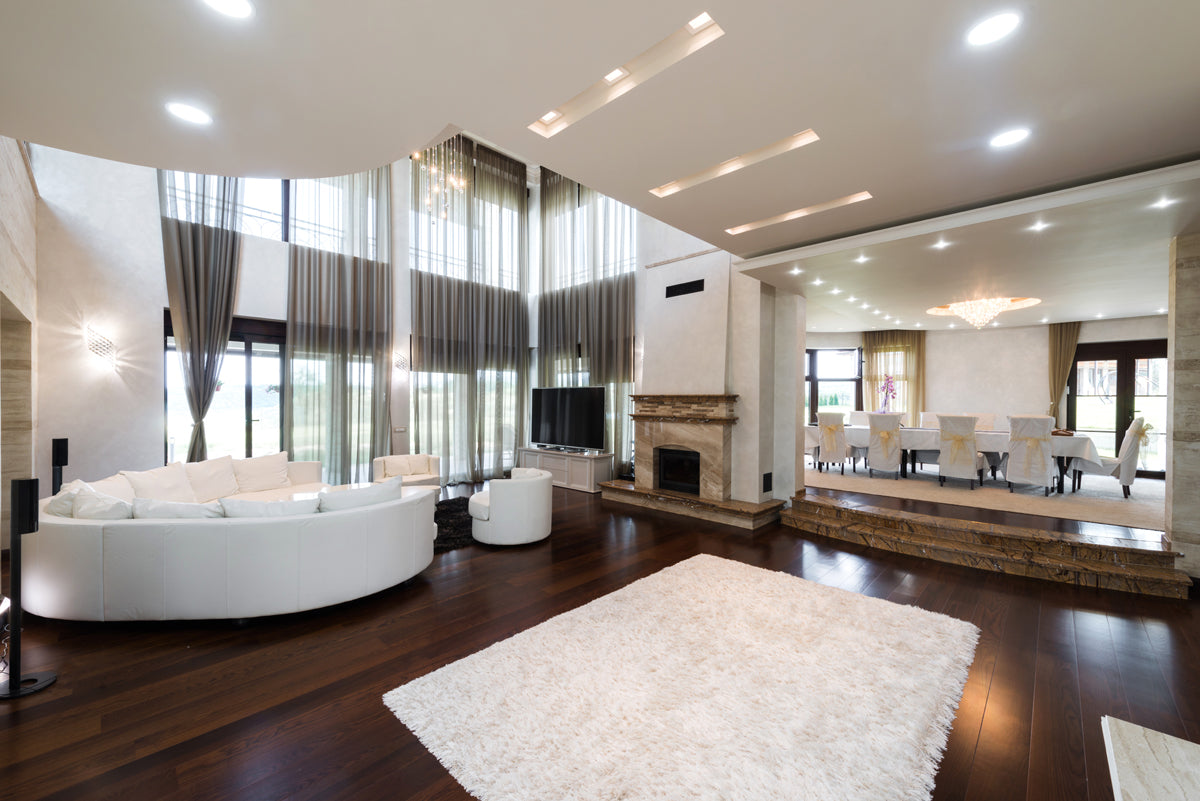On orders $99+
On orders $99+


The cost of installing recessed lighting can vary depending on a number of factors, including the size of the room, the type of recessed lighting fixtures you choose, and the cost of labor in your area.
One of the most common inquiries received about the installation of recessed lighting – a popular feature that can provide a streamlined, modern look and a well-lit environment. However, homeowners often grapple with questions about cost, process, and design considerations. Lets explore everything you need to know about the costs and factors involved in installing recessed lighting, ensuring you're well-informed before embarking on this home improvement project.
Understanding Recessed Lighting
Recessed lighting, also known as downlights or can lights, are light fixtures installed above the ceiling line, providing light from a hole that looks like it's part of the ceiling. They are versatile, unobtrusive, and effective at providing ambient, task, or accent lighting depending on their placement.
Cost Breakdown for Installing Recessed Lighting
There are several elements contributing to the total cost of installing recessed lighting: the lights themselves, the installation process, and any additional features or complications.
Recessed Lighting Fixtures: The cost for each recessed light fixture typically ranges between $20 to $200, depending largely on the quality and design. The fixture consists of the housing (the part hidden in the ceiling), the trim (the visible part), and the bulb.
Installation Costs: On average, a professional electrician charges between $100 to $200 per fixture for labor. This can vary based on your location, the complexity of the wiring in your home, and whether your ceilings are standard or high.
Additional Features: Dimmer switches, which allow you to control the brightness of the light, can cost an additional $75 to $150 per switch. Other factors that might increase cost include installing lights in insulated ceilings or installing non-IC-rated lights, which require a safety barrier between the fixture and insulation.
For an average-sized room requiring six recessed light fixtures, with dimmer switches and considering labor cost, the total cost can range from $900 to $2,400. It's important to get a detailed estimate from your electrician or contractor before starting the project.

Planning the Project
Successful installation of recessed lighting involves careful planning. Here are steps I typically follow as an interior designer:
Evaluate the Space: Consider the room's purpose, the current natural light it receives, and how additional lighting will complement this. Do you want to highlight a piece of artwork? Illuminate a reading corner? Provide overall ambient lighting?
Plan the Layout: As a rule of thumb, fixtures should be spaced equally throughout the room, typically 4-6 feet apart for a standard 8-foot ceiling. In larger spaces, you may need more lights to ensure adequate coverage.
Choose the Right Lights: There are different types of recessed lighting fixtures. 'New construction' fixtures are used when you have access to the space above the ceiling, while 'remodel' fixtures are designed for existing ceilings. There are also 'IC-rated' fixtures designed to be safe in contact with insulation.
Hire a Professional: Due to the electrical work involved, it's highly recommended to hire a professional electrician to install recessed lighting. They'll ensure the work is done safely and according to code.
Designing with Recessed Lighting
Recessed lighting can add depth and dimension to a room, especially when combined with other lighting sources. Here are a few design tips:
Layer Your Lighting: Recessed lighting is best used in conjunction with other lighting types. Pair it with pendant lights, lamps, or track lighting to create a warm and inviting ambiance.
Avoid Shadows: Place recessed lights around the perimeter of the room to avoid casting shadows when you're in the middle of the room. Also, be mindful of task areas, like kitchen counters, where light needs to fall in front of you.
Consider the Bulb Type: LED bulbs are energy-efficient, have a longer life, and come in different color temperatures. Warm white (2700K to 3000K) is ideal for living rooms and bedrooms, while cool white (3500K to 4100K) is better for task-oriented rooms like kitchens and laundry rooms.

While the cost to install recessed lighting can vary greatly depending on several factors, it's an investment that pays off in the functionality and aesthetic appeal it adds to your home. It's not just about the light fixtures; it's about creating a space that's warm, welcoming, and truly yours. Armed with the right information and a professional team, you can illuminate your home in the best light possible.
Leave a comment